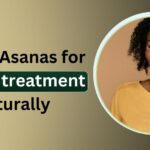Psoriasis & what causes it?
It is an autoimmune skin disorder that accelerates the life cycle of skin cells, showing to them accumulating quickly on the surface. This results in red, scaly patches that may be itchy, sore, & sometimes crack or bleed. It typically occurs on the scalp, elbows, hands, & lower back but can occur on any area of the body.
Psoriasis is not an infection, and the cause is unknown, although it’s associated with an overactive immune system and genes. Stress, infections, cold weather, and some medications can trigger flare-ups.
There are several forms, including plaque psoriasis (most prevalent), guttate, inverse, pustular, and erythrodermic psoriasis. Therapy depends on the severity of the psoriasis sufferer and may involve local cream, light therapy, or systemic treatments such as biologics.
Although there is no cure, appropriate management will keep symptoms under control and enhance the quality of life. Lifestyle modifications, including moisturizing and avoidance, can also assist.
It is important to treat the psoriasis condition.
If you have read over the disease-related impacts listed in the earlier sections, the answer to this question should be obvious. In addition to managing the skin’s symptoms, looking for a treatment for your psoriasis patches may also assist in lowering inflammation in your body, which may prevent further health problems.
You may decide to treat your psoriasis for a number of reasons. You may desire to get rid of the severe discomfort and itching that your skin is experiencing. You could want a confidence boost to dress in a particular way. It’s possible that you’re sick of continuously vacuuming or brushing off the scales that fall off the plaques. You may long to have talks with people who aren’t just looking at your plaques and actually listen to you. These are all good reasons to get treatment for psoriasis.
What are the benefits of yoga in psoriasis
This autoimmune ailment is an ongoing skin condition that results in skin inflammation, scaling, and pain. It is frequently brought on by immune system malfunction, stress, and lifestyle decisions. Although systemic medicines, phototherapy, and topical creams are frequently used to treat psoriasis, holistic natural approaches like yoga have become more well-liked due to their possible advantages. Yoga, an age-old practice that incorporates physical postures, breathing methods, & meditation, can be very beneficial for those with psoriasis.
What are the benefits of yoga in psoriasis?
Stress Reduction & Emotional Well-being
One known cause of psoriasis onset is stress. By encouraging attention & relaxation techniques, yoga helps people feel less stressed. Meditation & pranayama lower cortisol levels, which in turn reduce inflammation in the body. Daily yoga practice has been shown to decrease anxiety and depression, two major emotional issues that people with psoriasis face.
Enhanced Immune Response
Psoriasis is an autoimmune condition that develops when the immune system mistakenly attacks internal healthy skin cells. Yoga or exercise has been shown to control the immune system by reducing edema reactions. By altering immune function, everyday practice may help lessen the severity & frequency of skin psoriasis flare-ups.
Detoxification & Skin Health
Certain yoga poses stimulate blood circulation & enhance detoxification. Twisting poses, forward bends, & inversions help improve the body’s ability to eliminate HARMFUL toxins, which may contribute to clearer skin. Sweating during yoga & exercise sessions also aids in removing impurities from the skin, promoting a healthier complexion.
Reduced skin swelling
Chronic skin inflammation is a key factor in skin psoriasis. Yoga & exercise help regulate inflammatory markers in the body, potentially reducing signs & symptoms like skin redness, itching, and scaling. Gentle yoga poses, combined with relaxation methods, can support the body’s natural anti-inflammatory processes.
Enhanced Mobility & Pain Relief
Psoriatic arthritis, a type of psoriasis disease associated with this condition, leads to joint pain and stiffness. Yoga improves flexibility, strengthens muscles, & decreases joint distress. Daily practice helps maintain mobility & prevents stiffness, making everyday activities easier.
Lifestyle & Behavioral modification
Yoga promotes attention and self-awareness, which can result in better lifestyle decisions. Yoga may encourage people to improve their sleep habits, give up smoking, and eat a balanced diet—all of which have a substantial impact on the severity of psoriasis.
Bharat Homeopathy: How can it be permanently treated
The holistic health theory and practice of homeopathy are based on the idea that like cures like. In order to treat psoriasis at its core and not only reduce skin irritation, medical research uses medicines that are administered in small quantities. These treatments don’t contain any dangerous chemicals that have a lot of negative consequences. Rather, they come from entirely natural sources, such as minerals and plants.
Based on the patient’s medical history and the particular symptoms of psoriasis, a Bharat homeopathic treatment is chosen. The type of patches, the parts of the body where they appear, the patient’s emotional state, and environmental circumstances are other things that homeopaths consider. But for a thorough and all-natural psoriasis therapy, speaking with a certified and reputable homeopath is also crucial.


